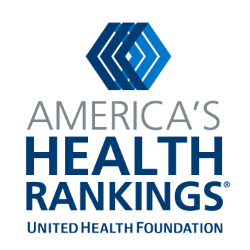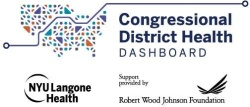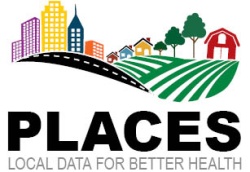Beyond the County Health Snapshots
After exploring your county’s data you may be left with more questions than the snapshot alone can answer, such as:
- Who is experiencing the worst health outcomes in my county?
- Are there neighborhoods that are experiencing particularly poor health?
- What about health conditions or health factors not measured in the snapshot?
Our data snapshots offer a starting place for understanding your county's health. Additional state and local data sources can help address questions beyond the county health snapshot.
Explore the resources below to find data beyond what’s available in your county health snapshot. Each resource offers data, summaries and reports at the county level, and many may provide data at smaller geographic levels, such as census tract or zip code.
State-Specific Data Sources
National Data Sources

The American Communities Project uses data and reporting to study the cultural, socioeconomic and political changes that are remaking the country at the local level using 15 types of counties—from Big Cities to Aging Farmlands.

America’s Health Rankings has provided an analysis of national health on a state-by-state basis by evaluating a historical and comprehensive set of health, environmental and socioeconomic data to determine national health benchmarks and state rankings for three decades.

The City Health Dashboard provides communities and city leaders with regularly updated health data specific to neighborhood and/or city boundaries – such as life expectancy, park access, and children in poverty -- to improve the health and well-being of everyone in the community. The dashboard offers data on more than 40 measures for over 900 U.S. cities.

Community Commons is a robust online platform that supports change-makers working to advance equitable community health and well-being. Community Commons has curated a searchable collection of toolkits, resources, data/mapping tools, and stories and organized them across over 200 topics.

The Congressional District Health Dashboard provides policymakers, advocates, and community members with actionable and nonpartisan health data at the congressional district level– such as life expectancy, diabetes rates, uninsurance, and children in poverty – to demonstrate strengths and challenges in their regions and drive positive change at the district, state and national level. The dashboard offers data on more than 35 metrics for all 435 U.S. Congressional Districts.

The Child Opportunity Index 2.0 spans nearly all U.S. neighborhoods and measures and maps the quality of resources and conditions that matter for children to develop in a healthy way in the neighborhoods where they live.

The Lab on Regional Innovation and Spatial Analysis (LRISA) at MIT, led by Dr. Amy Glasmeier, and partners West Arete and LOOP have developed the Living Wage Calculator. This tool helps individuals, communities and employers determine a local wage rate that allows residents to meet the minimum standards of living.

The National Equity Atlas contains data on demographic change, racial and economic inclusion, and the potential economic gains from racial equity for the largest 100 cities, 430 large counties, the largest 150 regions, all 50 states, and the United States as a whole.

PLACES is a collaboration between CDC, the Robert Wood Johnson Foundation, and the CDC Foundation. PLACES provides health data for small areas across the country. This allows local health departments and jurisdictions, regardless of population size and rurality, to better understand the burden and geographic distribution of health measures in their areas and assist them in planning public health interventions.

The Rural Health Information Hub (RHIhub) has compiled an extensive list of resources and tools relevant to exploring health in smaller geographic areas of the nation. Many of the data sources used in the County Health Rankings can be found here, as well as a plethora of others.

The United States Small-Area Life Expectancy Project (USALEEP) is the first public health outcome measure available nationwide at the census tract level—measuring life expectancy at birth for nearly every neighborhood in the country.
Visualizing the Data using Maps
Data visualized on maps can be a powerful tool to uncover regional patterns and an appealing way to convey information to others. Maps can be used to advocate for the improvement of health for everyone by emphasizing and communicating place-based health disparities. The resources below include interactive maps and mapped data available for download:
- ArcGIS Living Atlas of the World: an expansive collection of geographic information from around the U.S. and around the world. The Living Atlas includes maps, apps, and data layers to support your work. Within The Living Atlas, you can find County Health Rankings data from 2018 to present in addition to web maps and applications utilizing these data. The County Health Rankings feature layers can be visualized in Esri’s Map Viewer, added to Esri web mapping applications, or opened in ArcMap or ArcGIS Pro.
- Climate Mapping for Resilience and Adaptation Assessment Tool: view real-time maps showing where climate-related hazards are occurring today and how hazards are projected to change over time.
- Climate Opportunity Map: an interactive mapping tool from the Brown University Climate Solutions Lab depicting possible benefits of investing in clean energy and climate solutions including renewable construction jobs, lives saved by clean air and more.
- Climate TRACE Emissions Map: an interactive map of greenhouse gas emissions from 1.8 million sources globally. Data and methodology are available for download by sector and country.
- Health Map: an interactive map from the Boston Children’s Hospital Computational Epidemiology Lab that provides data on disease outbreak monitoring and real-time surveillance of emerging public health threats. The map displays the output of the HealthMap machine learning tool which aggregates informal online sources, including news media and social media posts, from around the globe to track infectious disease outbreaks 24/7/365 in 15 functional languages.
- Interactive Map of Health Disease and Stroke: an online mapping tool from the CDC Division for Heart Disease and Stroke Prevention that allows users to create and customize county-level maps of heart disease and stroke by demographics including race and ethnicity, gender, and age group.
- Mapping Inequality: Redlining in New Deal America: an interactive web mapping application created by the Digital Scholarship Lab at the University of Richmond. Mapping Inequality opens the federal Home Owner’s Loan Corporation (HOLC) files at the National Archives to scholars, students, residents and policy leaders in local communities and makes the well-known security maps of HOLC available in digital form.
- Map the Meal Gap: provides food insecurity, SNAP, poverty, and food cost data at multiple geographic levels, including county, food bank service area, congressional district, and state.
- Native Land Digital: this tool "strives to create and foster conversations about the history of colonialism, Indigenous ways of knowing, and settler-Indigenous relations." The entirety of the U.S. has been home for many thousands of years to hundreds of Indigenous nations – this visual tool can be used to highlight organic and Indigenous boundaries within and across the U.S.
- Opportunity Index: provides a snapshot of what opportunity looks like at the state and county levels.
- Rural Data Explorer: an interactive web map created by the Rural Health Information Hub (RHIhub) which can be used to view a wide range of data on health disparities, health workforce, demographics, and more. Facilitating comparisons of metropolitan and nonmetro counties, nationwide and by state. Instructions for how to use the data explorer can be found on the RHIhub Data Visualization Help page.
- US COVID Atlas: this tool “works to understand, archive, and represent the often unequal impact of the COVID-19 pandemic in the United States.” It includes many pandemic-related measures of health including vaccination rates, demographic information, and mobility. It continues to be updated and remains relevant as the pandemic shifts.
- US Health Map: an interactive map from The Institute for Health Metrics and Evaluation (IHME) center at the University of Washington. Contains measures of life expectancy, mortality, and risk factors such as smoking, physical activity, and diabetes.
